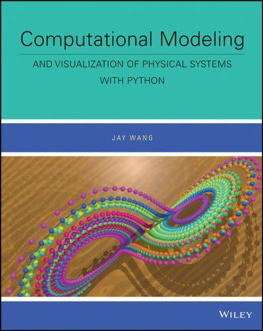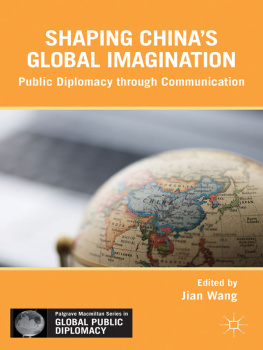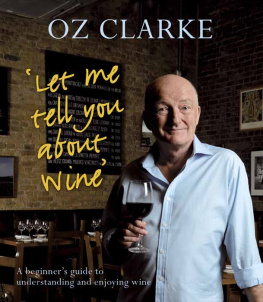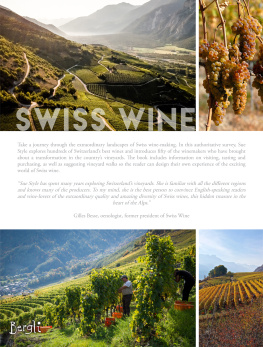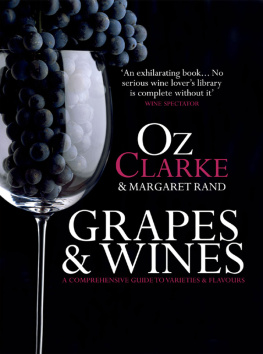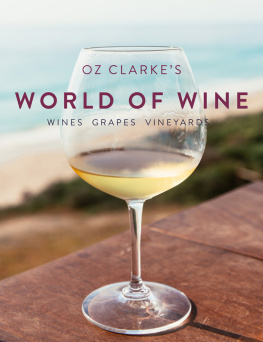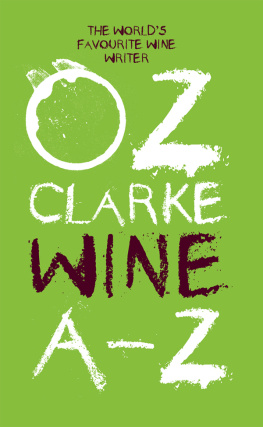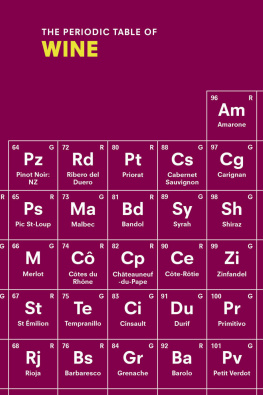

The Chinese Wine Renaissance
A wine lovers companion
JANET Z. WANG


CONTENTS
About the Author
Janet Z. Wang spent her formative years in China before completing her education in the UK. She has a passionate interest in and deep knowledge of Chinese wines, and she is a contributing author on decanterchina.com, a bi-lingual website presented by Decanter the worlds leading wine media brand. Her wine writing has been shortlisted for the Circle of Wine Writers Young Wine Writers Award.
@JZWinepeek
Picture credits:
Attribution-ShareAlike 2.0 Generic:
Chteau Changyu Moser XV: ; first colour section 6
Chengdu Youyuanfang Spirits Co. Ltd: ; first colour section: 11, 12
Fang Ruozhou: : first colour section: 13, 14, 15, 16
Lu Kuangsheng: ; endpapers
Li Demei: ; first colour section: 2, 7, 8, 9, 10
Mot Hennessy, Jean Penninck: first colour section: 1(top and bottom)
Rong Jian: first colour section: 4, 5
Skyline of Gobi Vineyard: first colour section: 3
Wellcome Collection: ; second colour section: 14, 16
Other images are by courtesy of the museums noted in captions Text design: Peter Ward
Every effort has been made to secure permissions and credits where necessary; the author and publishers would be happy to hear of any oversight
Titles of the interviewees are as they were at the time of the interview

Foreword by Oz Clarke
Ive been visiting China for over 30 years on trips to do with food, tea, music and culture, even railways, yet rarely with wine as my prime objective. But I learned quickly enough about jiu a word that seems to encompass pretty much every alcoholic beverage in China, from the fieriest white spirit to the fascinating, mellow, ancient world of rice-based wines, and now to the pulsating, rapidly changing, constantly evolving world of wines made from the grape. I also revelled in the eating and drinking culture that so many different regions of China boast in all their glorious individuality. But I never really got to the heart of what turns out to be a truly astonishing culture of wine in China, reaching back thousands of years, and now racing forwards faster than any wine culture in the world.
Janet Wang could not have come into my life at a more propitious time. I first met her at a tasting of Swiss wines, and she immediately impressed me with her enthusiasm, her determination to understand and experience every different flavour and style, and also with her open-mindedness. When I said Id like to understand the world of Chinese wine better, she just said, Give me time and you will.
This indispensable new book shows that Janet has spent her time well. She has managed to bend her extremely focused, business-like mind to this complex world and explain it to Western readers in such a reasoned and clear-eyed way that the challenges of understanding China and its relationship with wine turn into intriguing mysteries, which she unravels on the page, and often illustrates with the counterpoint of Chinese poetry.
The Chinese Wine Renaissance is not just about Chinese wine, though. It is about China and wine what part wine has played in Chinese life, how this changed dramatically in the early part of the twenty-first century, and where wine in China is now headed.
This book takes me into the Chinese mind, for better and for worse, and has transformed my ability to enjoy the rich tradition of all forms of Chinese wine, from the misty distant past of ancient rice harvests to the glaring spotlight of the latest Cabernet Sauvignon. It also explains very punchily and lucidly the current Chinese attitudes to wine, and the ambitions the Chinese quite unashamedly harbour for the future. Thank you, Janet. I am sure your book will find the audience it deserves.

A note on spellings
In this book, and in most modern texts on China, Chinese words are generally spelled using the pinyin system, which is the standardised phonetic transliteration of Mandarin Chinese words using the Roman alphabet, a system devised in the 1950s and gradually adopted internationally.
Pinyin spellings are used here unless certain words are much better known in their Romanised or WadeGiles forms (the legacy European transcription systems), in which case the most familiar convention will be used alongside, or instead of, the pinyin version. For example, the Romanised name Confucius is better known than the pinyin version, Kong Fu Zi. Similarly, the WadeGiles spelling of Canton over Guangdong is more recognisable in English. In other cases, such as several Chinese wine brands, the pinyin and WadeGiles versions are evenly matched, and interchangeable in common usage. The pinyin versions tend to be more recognisable to a Chinese audience while, globally, the brand has often adopted WadeGiles spellings, such as in the case of Tsingtao (WadeGiles)/Qingdao (pinyin), Changyu (WadeGiles)/Zhangyu (pinyin) and Kweichow Moutai (WadeGiles)/Guizhou Maotai (pinyin).
In addition, since Chinese words are made up of one or more monosyllabic characters, pinyin spellings may include a space between each syllable corresponding to each Chinese character, or may be joined up much like an English word. For example, pinyin is sometimes written as pin yin to correspond to the two Chinese characters . Currently there is no standardisation, although syllables tend to be closed up as a word becomes familiar: thus Beijing rather than Bei Jing, in the same vein that wine making may be written as winemaking. Western writing tends to have spacing by word because it is more relatable to the way in which letters are clustered. For example, the pinyin spelling of the ancient city Xi An is sometimes Xian an apostrophe is required here in the spacing by word system, where two vowels are adjacent to each other, in order to disambiguate the two distinct syllables xi and an. In this book, there will be a mixture of pinyin spellings, depending on convention and ease of reading. The main point to bear in mind is that variations will inevitably arise.
Things become yet more complicated with names of people, dynasties and places. A sovereign may be referred to by their birth name, the name they were known by as a ruler, their posthumous name or temple name; men of letters, such as writers and poets, often adopted a style name in addition to their birth name; even dynasties may have different names depending on ones political stance or for ease of chronology. There are also instances where names are more recognisable or meaningful to the Western reader in their literal form, such as the Yellow River rather than Huang He. I have opted for the versions that will seem most familiar to the modern audience.
The reader should also bear in mind that a particular Romanised spelling could correspond to a multitude of different Chinese characters with different meanings (and possibly different intonations), such as the Zhou dynasty, which overthrew a tyrant king named Zhou. Luckily, the context is usually sufficient to differentiate the two.
Next page


